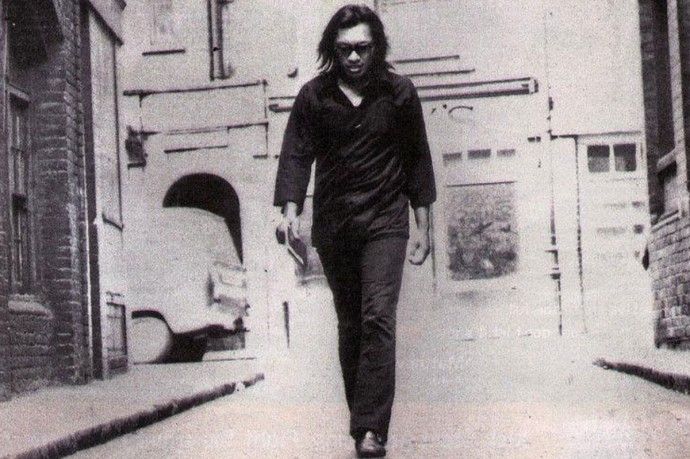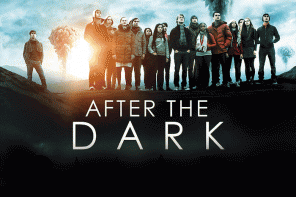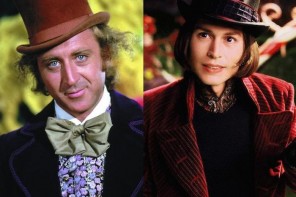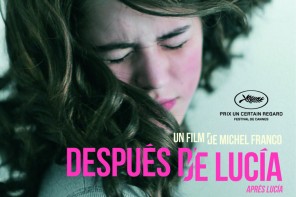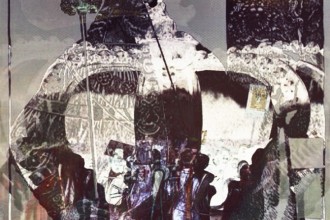Searching for Sugarman (2013) by Malik Bendjelloul
This review may contain spoilers. Who cares?
Searching for Sugarman won the Academy Award for Best Documentary Feature this winter. It was directed by a Swedish filmmaker, Malik Bendjelloul. Now let’s check out the story: in 1968, in the midst of a gloomy Detroit joint, two producers discover Sixto Rodriguez, a mysterious singer who turned his back on the public out of shyness. Two albums later, Rodriguez was not met with the success his talent deserved. At least not a success that he knew of, as in South Africa his records are a hit, the soundtrack of a generation. From then on the legend begins. In South Africa, Rodriguez’s true identity is unknown, he is an anonymous idol. A few years after apartheid, a musicologist and a record sales owner team up to investigate and find out who this Rodriguez was. The legend said he killed himself in front of a scarce audience out of despair from his lack of recognition. Searching for Sugarman reconstructs this search.
At the end of the search, we discover, as the two investigators formerly discovered, that Sixto Rodriguez is alive and well and that he still lives in Detroit.
This is where anybody would mumble the baffled banalities about “life being stronger than fiction” and all that sort of bullshit. As if life did not need screenwriters. Well folks, this movie is an Unidentified Film Object, but it is not a documentary. The screenplay is one of the most prominent elements of this movie.
First, the structure of the film.
Looking closely at Searching for Sugarman’s structure, we notice that it has some elements of an academic screenplay, one that deals with the building of the hero. The movie begins with the “initial legend” of Rodriguez’s death. The most widespread opinion about Rodriguez’s death in South Africa when the investigation began in the early 1990s was that he set himself ablaze in front of a hostile audience. Then the quest begins. By the end of the quest the truth will be unravelled for the searchers and they will return home allowing their fellow countrymen to benefit from the knowledge they acquired in their journey through deceit and adversity. That is to say, in a more concrete way, that after the journalist and the record sales owner have found Rodriguez, the whole of South Africa will rejoice. Indeed the second part of the movie shows footage of Rodriguez’s concerts in South Africa in 1998.
It is also interesting to see how the discovery of Rodriguez is delivered in the film. It comes very late in the movie, as a big twist. The filmmakers knew Rodriguez was alive when they began shooting, and so did the interviewees. Yet, this information is held back in order to prepare the surprise. Like any good twist, this one compels the audience to reevaluate all he has seen previously in light of this revelation. The attitude of the filmmakers towards reality does not resemble the ethics of the documentary. It has much more to do with dramatic efficiency. It’s not about informing the public, it’s about seducing the audience. And I must say, it is efficient. All the more so as the revelation comes at a point when you begin to feel bored by the succession of people going on about how unfair it was that Rodriguez hadn’t gained recognition and what a genius he was and blah blah blah.
Secondly, reconstituting the myth.
Before his identity was known, Rodriguez was a myth for South Africans; he then became a man when they finally met him. This movie turns him back into a myth. Among the most noteworthy elements of this story are those that are not included in the movie. Rodriguez was not completely off the radar for everybody. In fact, in 1979 and 1981 he was touring in Australia, where he was at least as famous as in South Africa. The filmmakers decided not to evoke this. Another missing element in the movie is Rodriguez himself. Well, I’m exaggerating but it is appalling to see how little we see of him in the film. His daughters do most of the talking when it comes to expressing how it felt to be recognized after such a long time. In addition, the way Rodriguez himself is shot conveys this aura of mystery. When being interviewed, Rodriguez is turning his back to the window, therefore his face is barely visible in his gloomy shady room. Indeed, it seems the project of the filmmakers was not to flash bright lights on Rodriguez but to build a character and make the audience’s imagination wander about his shadowy figure.
Rodriguez’s songs convey the idea of a melancholic icon, some kind of folk artist living amongst and singing about the working man in a romantic gesture. Maybe he was, but the devices used here to portray him as a wise hobo master are heavy-handed. We are shown Rodriguez walking in the wind, stumbling on a snowy sidewalk, lifting bricks. All these scenes are elegantly shot with smooth tracking. It is not an attempt to enter the man’s daily life but to stage him as the persona depicted in his songs : a working class hero.
Yet, this unfolds one of the main paradoxes of the movie. While depicting Rodriguez as a wise man withdrawn from show business, the movie provides him with a brand new popularity. In fact, Rodriguez is currently touring worldwide. The character portrayed in this movie is shadow like: he disappears if you put him in the light.
Third, this hybrid thing is an efficient feel-good movie but a terrible documentary.
In fact, Malik Bendjelloul used various techniques in this film. Some seem to be drawn from old-fashioned music videos, like the way Rodriguez is staged walking in the snow. As I pointed out, he also exerts a great deal of narrative technique. There are also some scenes in cartoon animation. The variety of images and the different status they all bear would be an interesting element if the proper documentary parts of the movie were cinematically original or, at least, if they were questioned by the emergence of different images as, for example, in Marcel Ophüls’ The Sorrow and The Pity. As far as investigation is concerned in Searching for Sugarman, the only images that illustrate it are footage of his concerts and the dull series of talking heads I mentioned earlier. Once you put it this way, it is as if Bendjelloul was not confident enough about the quality of the subject he had for a documentary and felt the need to spice it up. Thus it seems logical that the movie’s soundtrack does not only use Rodriguez’s songs but some cheesy piano tunes to dramatize some elements of the story. This choice is unfortunate as Rodriguez’s songs are by far the biggest quality of the movie and probably the only element of the film that will be remembered over time.
It also lacks critical distance. The assertions of the interviewees are never questioned, neither by the interviewer nor by the editing. For example, the film never contradicts or questions the fact that, in South Africa, Rodriguez was as big a star as Elvis or Paul McCartney. We have to take what the interviewees say for granted. Yet, we can be surprised at one point when an interviewee declares that the upheavals in South Africa began thanks to white Afrikaners, that the young white liberals who listened to Rodriguez were those who started a revolution. Is that so?
It lacks investigative courage. At one point, the interviewer asks about whose pocket the money ended up in if Rodriguez’s records sold so well in South Africa. Not only does this question not find an answer but it is abruptly moved past in the film. Why leave this question in the final edit if the audience is not provided with an answer or, at least, proof that this side of the story was ever investigated? It’s as if the film were pointing out its own limits.
As a conclusion, we can credit Searching for Sugarman for providing Sixto Rodriguez with some fame for his work. His songs deal with “Cold Facts” (as Rodriguez entitled his first album) and with some aspects of harsh proletarian reality (reality being something that Bendjelloul does not care about). In the end, it is this essential contrast that makes the movie unbearable.

